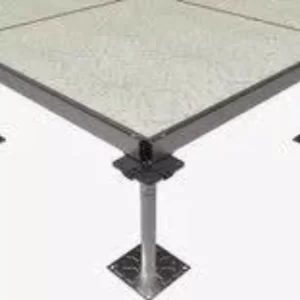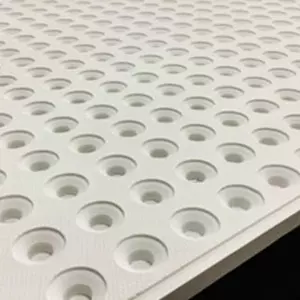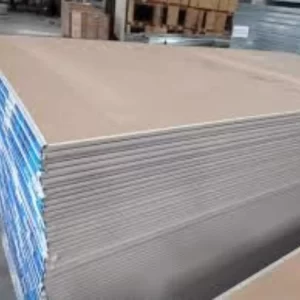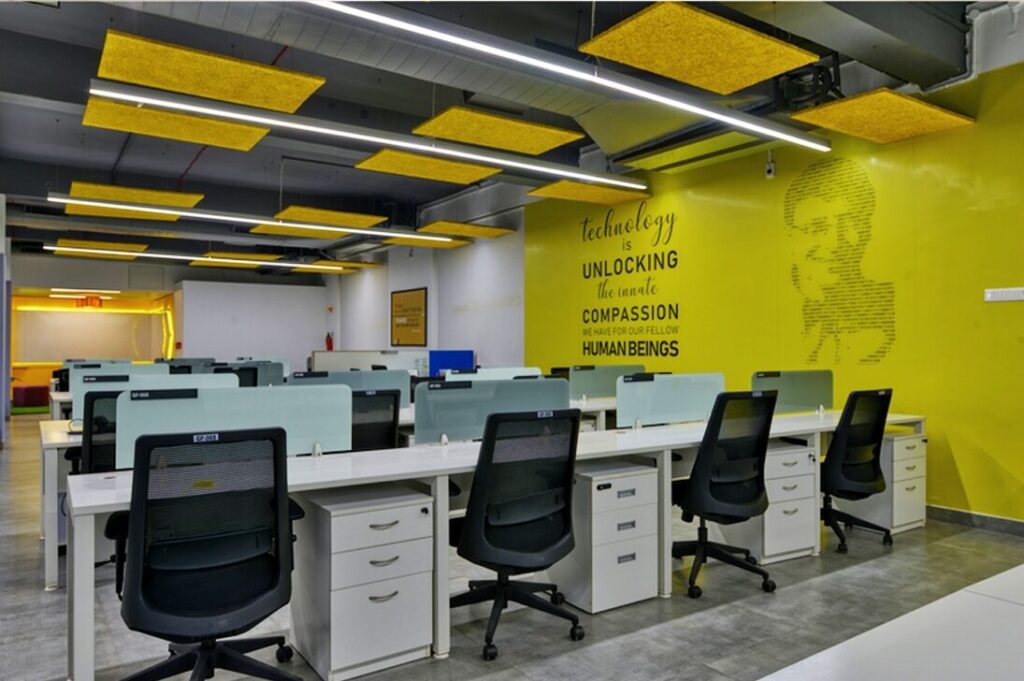The Environmental Impact of Raised Access Flooring
Introduction
The Environmental Impact of Raised Access Flooring refers to a system that elevates the floor above the structural subfloor, creating a void or plenum between them. This void allows for the distribution of various services such as electrical wiring, data cables, and HVAC systems. Raised access flooring is commonly used in commercial buildings, data centers, and other facilities where flexibility, accessibility, and adaptability are crucial.

2. Energy Efficiency and Reduced HVAC Requirements
One of the significant environmental benefits of raised access flooring is its impact on energy efficiency. By creating an accessible space for services and utilities, raised access flooring reduces the need for invasive and disruptive installations in the structural subfloor. This feature allows for easier access to building systems, leading to quicker maintenance and upgrades. Moreover, the void created by the raised floor acts as a plenum for air distribution, optimizing the performance of heating, ventilation, and air conditioning (HVAC) systems. The result is a more energy-efficient building with reduced HVAC requirements, translating into lower energy consumption and greenhouse gas emissions.
3. Enhanced Air Quality and Indoor Environment
Indoor air quality is a crucial aspect of any building’s environmental impact. Raised access flooring contributes positively to air quality by facilitating proper air circulation. The void underneath the raised floor allows for the passage of fresh air and the removal of pollutants, ensuring a healthier indoor environment. Additionally, raised access flooring systems often incorporate air grates or vents, which further enhance air circulation and prevent the accumulation of dust and contaminants.
4. Recyclability and Reusability of Raised Access Flooring Materials
Sustainability is closely linked to the recyclability and reusability of materials. Raised access flooring components are typically made of recyclable materials such as steel, aluminum, and recyclable polymers. These materials can be recovered and reused at the end of their lifespan, reducing the demand for new resources and minimizing waste. Moreover, modular design and construction techniques enable easy disassembly and reconfiguration, allowing raised access flooring systems to adapt to changing needs and layouts.
5. Water Conservation and Sustainable Manufacturing Processes
Water conservation is a critical aspect of sustainable construction practices. Many raised access flooring manufacturers prioritize water conservation by implementing efficient manufacturing processes. These processes minimize water usage, reduce waste, and employ eco-friendly production methods. Additionally, sustainable sourcing of raw materials further enhances the overall environmental profile of raised access flooring.
6. Noise Reduction and Acoustic Performance
Noise pollution is a prevalent concern in modern buildings, particularly in open office spaces and facilities with high foot traffic. Raised access flooring can help mitigate noise-related issues by providing excellent acoustic performance. The void beneath the floor acts as a buffer zone, absorbing and dampening sound vibrations. This feature creates a quieter environment, improving productivity, concentration, and overall occupant comfort.
7. Challenges and Limitations of Raised Access Flooring
While raised access flooring offers numerous environmental advantages, it is essential to acknowledge its challenges and limitations. These may include higher initial costs compared to traditional flooring systems, specialized installation requirements, and limited design options. Additionally, the environmental benefits heavily depend on proper installation, maintenance, and adherence to sustainable practices throughout the lifecycle of the raised access flooring system.
8. The Importance of Proper Installation and Maintenance
To maximize the environmental benefits of raised access flooring, proper installation and maintenance are crucial. Certified professionals should handle the installation process, ensuring that the system meets industry standards and sustainability guidelines. Regular maintenance and inspections are also necessary to identify and address any issues promptly, prolonging the lifespan of the flooring system and optimizing its environmental performance.
9. Case Studies: Examples of Sustainable Raised Access Flooring Implementation
Several real-life case studies demonstrate the successful implementation of sustainable raised access flooring. These examples showcase how organizations have embraced environmentally conscious practices and reaped the benefits of raised access flooring. They serve as inspiration and provide valuable insights into sustainable design, energy efficiency, and improved indoor environments.
10. Future Trends in Sustainable Raised Access Flooring
The field of sustainable raised access flooring is continuously evolving, driven by innovations in materials, manufacturing processes, and design principles. This section explores future trends and emerging technologies that promise to further enhance the environmental performance and overall sustainability of raised access flooring systems.
Conclusion – The Environmental Impact of Raised Access Flooring
Raised access flooring offers a range of environmental benefits, contributing to energy efficiency, improved indoor air quality, recyclability, and noise reduction. However, it is essential to consider the challenges and limitations associated with its implementation. By prioritizing proper installation, maintenance, and adherence to sustainable practices, raised access flooring can play a significant role in creating greener and more sustainable built environments.
Frequently Asked Question- The Environmental Impact of Raised Access Flooring
- How does raised access flooring contribute to energy efficiency?
Answer: Raised access flooring contributes to energy efficiency by reducing the need for invasive installations in the structural subfloor. It allows for easier access to building systems, leading to quicker maintenance and upgrades. The void created by the raised floor also optimizes the performance of HVAC systems, resulting in lower energy consumption. - Can raised access flooring be used in residential buildings?
Answer: While raised access flooring is commonly used in commercial buildings and data centers, it can also be utilized in residential buildings. However, the suitability and practicality of raised access flooring in residential settings may depend on various factors, such as design preferences, budget considerations, and specific requirements of the space. - What are the primary materials used in raised access flooring systems?
Answer: The primary materials used in raised access flooring systems include steel, aluminum, and recyclable polymers. These materials offer durability, strength, and recyclability, making them ideal for sustainable construction practices. - Are there any limitations to the design options with raised access flooring?
Answer: While raised access flooring provides flexibility and adaptability in building design, there may be some limitations to the design options. These limitations can vary depending on the specific manufacturer and system chosen. It is essential to consult with professionals and suppliers to explore the available design options that align with your project requirements. - How can raised access flooring improve indoor air quality?
Answer: Raised access flooring improves indoor air quality by facilitating proper air circulation. The void underneath the raised floor allows for the passage of fresh air and the removal of pollutants. Additionally, the incorporation of air grates or vents in raised access flooring systems enhances air circulation and prevents the accumulation of dust and contaminants.
Other Products

Grg ceiling tiles

Gypsum boards

Magnesium oxide board
Contact Us
Mobile: +919008400701 / 705
Email: sales@jayswalgroup.com

Visit Us
Address:
#6, 10th B Cross, Jayswal Center, KHB Main Road, Kaveri Nagar, Kanakanagar, RT Nagar, Bangalore – 560032, Karnataka, India.
Other Websites: